目次
- 1 Japan-US Deal: $550B Investment for 15% Tariffs
- 1.1 Agreement Details: Surface “Achievements” and Hidden Massive Concessions
- 1.2 Negotiation Timeline: Trump Administration’s Gradual Pressure and Japan’s Concessions
- 1.3 Fierce Criticism of the Ishiba Administration: Accusations of “Selling Out the Country”
- 1.4 Serious Impact Analysis on Japan’s Economy
- 1.5 US Economic Security Strategy and Japan’s Position
- 1.6 Historical Context: Comparison with Past Japan-US Trade Friction
- 1.7 Domestic Reactions: From Business Community to General Public
- 1.8 Future Outlook: Japan’s Structural Economic Challenges
- 1.9 International Perspective: Responding to the New International Economic Order
- 1.10 Expert Analysis and Recommendations
- 1.11 Conclusion: The Japan-US Tariff Agreement as a Historical Turning Point
Japan-US Deal: $550B Investment for 15% Tariffs
This agreement was announced immediately after the ruling coalition suffered a historic defeat in the July 21 House of Councillors election, losing its majority in both houses of the Diet for the first time since the Liberal Democratic Party’s founding in 1955. The timing, when Prime Minister Ishiba’s administration was at its most vulnerable, has sparked criticism that it exposed the limits of Japan’s negotiating power.
Agreement Details: Surface “Achievements” and Hidden Massive Concessions
Tariff Rate Changes
The tariff rate changes in this agreement are as follows:
| Item | Pre-Agreement Status | Post-Agreement Terms | Impact/Notes |
|---|---|---|---|
| Mutual Tariffs | Up to 25% threatened | 15% set | Lowest among US trade deficit nations |
| Auto Tariffs | 25% (additional tariff) | 15% (including existing rates) | Reduction without quantity limits |
| Steel/Aluminum | 50% additional tariff proposed | Unchanged (outside agreement) | Remains for future negotiations |
| US Investment | — | $550 billion (≈80 trillion yen) | Phased implementation over years |
| Profit Distribution | — | 90% to US | Unprecedented terms |
Prime Minister Ishiba emphasized this as “the lowest tariff rate among countries with trade surpluses with the US,” but this “achievement” has complex circumstances behind it. While 15% is indeed lower than the initially feared 25%, it represents effectively a tariff “increase” for items previously untaxed.
The Shocking $550 Billion Investment
The most controversial aspect is Japan’s $550 billion (approximately 80 trillion yen) investment in the US. To understand the scale of this amount, consider these comparisons:
- Equivalent to approximately 70% of Japan’s general account budget
- Four years’ worth of annual consumption tax revenue (≈20 trillion yen)
- Approximately 660,000 yen burden per Japanese citizen
- Exceeds Japan’s annual tax revenue of 75 trillion yen
Fierce Online Criticism:
“90% of profits to the US←What???? This isn’t investment, it’s usury”
“Are we a colony?”
“This isn’t a ‘deal,’ it’s ‘tribute.’ We’re already a vassal state.”
“A massive exploitation system” “An impossible deal”
The investment reportedly includes Japan’s cutting-edge technologies such as Denso’s solid-state battery factories and Kawasaki Heavy Industries’ liquid hydrogen carriers, raising concerns about technology transfer.
Agricultural Market Opening Details
| Product | Agreement Terms | Concerns |
|---|---|---|
| Rice | Maintain minimum access (770,000 tons/year) Increase US import ratio | Downward pressure on domestic rice prices |
| Other Agricultural Products | Market opening (details undisclosed) | Increased GMO crop imports |
| Automobiles/Trucks | Improved market access | Pressure to increase US vehicle imports |
“Japanese farmers will be wiped out”
“We’ll be forced to buy GMO and pesticide-laden agricultural products forever”
“Japan no longer has national interests”
Negotiation Timeline: Trump Administration’s Gradual Pressure and Japan’s Concessions
Chronology of Tariff Implementation
- February 1, 2025: 25% additional tariffs on Canada/Mexico, 10% on China
- March 12: 25% additional tariffs on steel/aluminum products
- April 2: 25% additional tariffs on all automobile imports announced (effective next day)
- April 2: “Reciprocal tariff” policy announced, suggesting up to 25% surcharge on trade surplus nations including Japan
- May: 25% tariffs expanded to major auto parts including engines
These measures severely impacted Japanese automakers:
| Company | Projected Loss (at 25% tariff) | Decline Rate |
|---|---|---|
| Toyota | ≈2.16 trillion yen | 35% decrease |
| Honda | Net profit 250 billion yen | 70% decrease |
| Suzuki | Net profit 320 billion yen | 23% decrease |
| Mitsubishi Motors | Net profit 40 billion yen | 2% decrease |
| Total Impact on 7 Automakers | Up to ≈1.7 trillion yen | |
Evolution of Japan’s Negotiating Position
- Initial Stage: Aimed for complete elimination of auto tariffs
- Middle Stage: Shifted focus to tariff rate reduction
- Final Stage: Compromised with “investment over tariffs” approach
Minister Akazawa flew to the US nine times in first class for intensive negotiations, but ultimately was forced to make substantial concessions.
“The ‘mission’ completed after nine first-class trips to the US was to offer 80 trillion yen to America and give them 90% of the profits. Truly ‘Country destroyed, miles earned.'”
Fierce Criticism of the Ishiba Administration: Accusations of “Selling Out the Country”
Suspicions About Agreement Timing After Election Defeat
In the July 21 House of Councillors election, the ruling coalition suffered a historic defeat, falling far short of a majority. This marked the first time since the LDP’s founding in 1955, about 70 years, that it lost majority control in both houses simultaneously, raising serious questions about Prime Minister Ishiba’s legitimacy as a leader.
Criticism of Election Defeat and Agreement Timing:
“[Sad News] The LDP-Komeito administration, after losing badly in the Upper House election, immediately sells out the country… spending 70% of the general account budget on US investment for a 15% tariff agreement”
“Ishiba got crushed”
“As expected, Ishiba Shigeru couldn’t handle the negotiations.”
“For the Trump administration, the amateur Ishiba administration was like twisting a baby’s arm.”
Mockery of “National Interest Negotiations” Statement
After the agreement, Prime Minister Ishiba stated it was “the result of negotiations staking national interests,” but this statement became a target of fierce criticism:
“Ishiba didn’t fight at all, he just handed everything over! This is the result→Trump: ‘Japan will invest 80 trillion yen in the US, and the US will receive 90% of the profits’ posted on SNS”
“Last-minute negotiations resulted in a crushing defeat! This is insane!”
“80 trillion⁉️ Wait! This is the best you could do? Unbelievable!”
Particularly, Trump’s expression that Japan would invest “under my direction” sparked successive criticisms that Japan’s sovereignty was being violated.
Calls for Ishiba’s Resignation
Growing Demands for Resignation:
“Hey Ishiba, declare your defeat. What are you going to invest 80 trillion yen in over how many years? Japan’s tax revenue is 75 trillion yen, right? Are we supposed to pay taxes for America’s benefit for an entire year?”
“This is Prime Minister Ishiba’s achievement! There’s no reason to stay as PM anymore. In a way, this is President Trump giving you an honorable exit! Please resign!”
“Are you trying to destroy not just the LDP but Japan itself?”
However, Prime Minister Ishiba denied resignation, stating “There has been no discussion whatsoever about my stepping down,” indicating his intention to continue. This prompted sarcastic comments like “The negotiation’s end gives him a reason to quit” and “Boss Trump eliminated his reason not to resign.”
Serious Impact Analysis on Japan’s Economy
GDP Suppression Effect Estimates
- Mizuho Research & Technologies: 25% mutual tariffs would suppress GDP growth by 0.78%
- Chubu Region Social Economic Research Institute: Production decrease of 2.78 trillion yen in 9 Chubu prefectures alone, GRP down 0.8 points
- Jitan Tech: Even 15% mutual tariffs would suppress real GDP growth by 0.5-1.0%
- Economists Overall: Could suppress Japan’s GDP by 0.2% to 1.8%
Meiji Yasuda Research Institute’s Yuichi Kodama analyzes that while the 15% agreement “avoids a severe recession,” economic recovery will be maintained “just barely.”
Compound Impact on the Automobile Industry
The impact on Japan’s core automobile industry is multifaceted:
- Toyota: Projected profit decrease of up to 2.16 trillion yen due to tariffs
- Honda: Net profit down 70% to 250 billion yen
- Mazda, Subaru: Rushing to expand local production but facing increased investment burden
- Tariff impact on 7 automakers: Up to approximately 1.7 trillion yen
2. Pricing Strategy Revision
Companies face difficult decisions about passing on tariff costs. Toyota has indicated a policy of “passing some tariff costs to prices (price increases) while absorbing some through corporate efforts,” but loss of competitiveness in the US market is inevitable.
3. Supply Chain Restructuring
According to Jitan Tech’s analysis, the 15% tariff will accelerate the “inside the fence” strategy—strengthening production and procurement within the US. However, production relocation requires time and massive investment, forcing continued exports in the short term.
Impact on Foreign Exchange Markets
The tariff agreement and 80 trillion yen US investment significantly impact foreign exchange markets:
| Impact Factor | Effect on Exchange Rate | Economic Impact |
|---|---|---|
| 80 trillion yen US investment | Continuous yen selling/dollar buying pressure | Tailwind for exporters |
| Trade balance deterioration concerns | Medium to long-term yen weakening factor | Increased burden on citizens from higher import prices |
| Risk aversion movements | Temporary yen strengthening (safe haven buying) | Pressure on exporter profits |
MUFG notes that the exchange rate temporarily strengthened from around 155 yen per dollar to 140 yen, warning that rapid yen appreciation could continue depending on President Trump’s statements, posing unexpected risks to Japan’s economy.
Devastating Impact on Agriculture
- Downward pressure on domestic rice prices from increased US rice imports
- Increased influx of GMO crops and agricultural products with different pesticide standards
- Serious damage to regional economies, especially rural areas
- Further decline in food self-sufficiency
“Trump… wants to protect American farmers. He doesn’t care what happens to Japanese rice farmers.”
“Ishiba protected export companies’ profits over Japanese farmers”
“Rice imports also run counter to agricultural revitalization”
US Economic Security Strategy and Japan’s Position
Trump Administration’s Multilayered Economic Security Policy
This agreement must be understood as part of US economic security policy:
- Trade Deficit Correction: Demanding correction of Japan’s US trade surplus (≈7 trillion yen in 2024), calling it “exploitation”
- Domestic Industry Protection: Justifying tariffs claiming “cheap imports threaten US auto industry infrastructure and supply chains”
- Technology Hegemony: Securing dominance in advanced fields like semiconductors, AI, quantum technology
- Supply Chain Reorganization: Building new supply chains excluding China
Japan’s Shift to “Investment Diplomacy”
Prime Minister Ishiba adopted an “investment over tariffs” approach, effectively capitulating to US demands. The 80 trillion yen investment is expected to target these areas:
| Investment Area | Specific Examples | Concerns |
|---|---|---|
| Semiconductor Manufacturing | Cutting-edge chip factories | Technology leakage risk |
| Battery Plants | Denso’s solid-state batteries | Loss of competitive advantage |
| Hydrogen Energy | Kawasaki Heavy’s liquid hydrogen carriers | US-biased development investment |
| Defense Industry | Joint development projects | Decline in self-defense capabilities |
| AI/Quantum Technology | R&D centers | Brain drain |
However, these investments being made under terms where “90% of profits go to the US” has drawn significant criticism.
Historical Context: Comparison with Past Japan-US Trade Friction
Viewing this agreement in historical context recalls the Japan-US trade friction of the 1980s:
- 1985 Plaza Accord: Yen appreciation to reduce export competitiveness
- 1980s Voluntary Restraints: Quantitative limits on auto exports
- Structural Impediments Initiative: Intervention in Japan’s economic structure itself
However, this agreement represents concessions exceeding these past agreements. The 80 trillion yen investment surpasses any previous agreement in scale, and the terms of “90% of profits to the US” are extremely unusual for an agreement between sovereign nations.
Domestic Reactions: From Business Community to General Public
Complex Business Community Response
Keidanren Chairman Tsutsui welcomed the agreement saying it “bore fruit from persistent negotiations focused on national interests,” but this statement drew fierce criticism:
“What achievement? Negotiate harder. Are there only carefree old men making money with other people’s money?”
“Keidanren has degenerated into a traitorous organization”
“Are they stupid?”
“Sycophantic cheerleading”
Meanwhile, an auto parts company president expressed gratitude that tariffs were kept to 15% instead of 25%, calling it “very welcome” and an “achievement.” Japan Foreign Trade Council Chairman Yasuo Nagayasu also commented, “We greatly appreciate that the uncertainty private companies were concerned about has been removed.”
Stock Market Reaction
After the agreement announcement, the Nikkei average surged 1,396.40 yen (3.51%) to close at 41,171.32 yen, hitting a one-year high:
| Stock | Price Increase | Market Cap Increase |
|---|---|---|
| Toyota | Up 16% at one point | Over 5 trillion yen in one day |
| Honda | Up 11% | — |
| Nikkei Average | Up 3.51% | Year-to-date high |
Market analysts explained this rise as “favorable buying dominated following the Japan-US tariff negotiation agreement and reports of Prime Minister Ishiba’s potential resignation.”
However, cynicism from the general public:
“Japan: Tariffs are 24%!↓We’ll make it 10% for now↓Not listening? Maybe 30%?↓25%!↓Fine, if you invest in America and buy rice, we’ll make it 15%↓Japan rejoices, Nikkei +1100←We are here. Like monkeys happy with morning three, evening four.”
General Public’s Anger and Resignation
Online, anger and resignation about the agreement details intermingle:
Concerns about Funding:
“Where’s the 80 trillion yen coming from? If we’re giving America 80 trillion yen as a present, Japan’s consumption tax generates 25 trillion yen annually, so we could have eliminated it for at least three years?”
“Eliminating consumption tax would have been far cheaper!!”
Tax Increase Anxiety:
“Don’t start saying we need tax increases to raise this money!”
“Politicians are too incompetent”
Demands for Domestic Investment:
“If we have that money, we should invest 80 trillion yen domestically”
“This means approximately 660,000 yen per citizen in taxes will be used for America instead of Japan. It’s infuriating that this is allowed 😠”
Future Outlook: Japan’s Structural Economic Challenges
Short-term Challenges
- Absorbing Tariff Costs: Companies seeking balance between price pass-through and profit compression
- Rapid Supply Chain Reorganization: Investment burden from shifting to US production
- Responding to Exchange Rate Fluctuations: Measures against rising import prices due to yen depreciation
- Formulating Agricultural Support: Compensation for farmers damaged by market opening
Medium to Long-term Challenges
- Industrial Structure Transformation: Shift from export-led to local production/consumption model
- Preventing Domestic Hollowing Out: Minimizing impact on domestic industries from US investment
- Managing Technology Outflow: Risk management for cutting-edge technology transfer to US
- Building New Growth Strategy: Diversified economic strategy reducing US dependence
Political Impact
Following the Upper House election defeat, the Ishiba administration may lose further support base due to this agreement criticized as “treasonous.” The opposition is expected to pursue:
- Questioning the 80 trillion yen funding source
- Demanding detailed disclosure of “90% of profits to US” terms
- Requesting investigation of agricultural market opening’s impact on domestic farming
- Demanding transparency in negotiation process
With growing calls for “immediate resignation” from within the ruling party, the administration’s future is extremely uncertain.
International Perspective: Responding to the New International Economic Order
Rise of Protectionism and Japan’s Choices
The Trump administration’s “America First” policy fundamentally challenges the postwar free trade system. Japan faces these choices:
| Option | Content | Risks and Opportunities |
|---|---|---|
| Deepening US Dependence | Continuing to accept US demands as in this agreement | Security maintained but economic sovereignty lost |
| Multilateral Diplomacy | Strengthening ties with EU and Asia | Risk of deteriorating US relations |
| Autonomous Economic Sphere | Strengthening domestic market and new growth model | Short-term growth slowdown but long-term autonomy |
Impact on Asian Countries
Japan’s major concessions may affect other Asian nations:
- South Korea: May face similar pressure (US trade surplus nation)
- Southeast Asian Nations: May benefit from Japan’s production base shift
- China: Studying Japan’s precedent for US negotiations and strategy formulation
- Taiwan: Watching impact on semiconductor industry
Expert Analysis and Recommendations
Economists’ Warnings
SMBC Nikko Securities – Koya Miyamae:
“Large US investments raise concerns that domestic companies’ investment destinations will shift to the US in the medium to long term, leading to domestic hollowing out”
Meiji Yasuda Research Institute – Yuichi Kodama:
“The 15% agreement is close to the best result, but economic recovery will be maintained just barely”
Jitan Tech:
“This agreement is merely superficial friction mitigation; Japan will be forced into more fundamental economic structural transformation and strategic reorganization”
Bank of Japan Deputy Governor Shinichi Uchida:
“A major step forward, but uncertainties remain. The impact of tariffs on the economy is difficult to confirm with data”
Policy Recommendations
Experts propose the following policy responses:
- Promoting Domestic Investment: Domestic investment promotion matching US investment scale (2027 target: 115 trillion yen)
- SME Support: Emergency financing and exchange rate measures for tariff-affected SMEs
- Agricultural Structure Reform: Transformation to competitive agriculture resilient to market opening with income compensation
- Technology Development Investment: Doubling R&D investment to secure next-generation technology superiority
- Monetary Policy Adjustment: Appropriate monetary policy management responding to yen depreciation pressure
Conclusion: The Japan-US Tariff Agreement as a Historical Turning Point
The July 23, 2025 Japan-US tariff agreement was not merely a trade negotiation result but a historical turning point concerning Japan’s economic sovereignty and international standing. While superficially achieving the “result” of keeping tariffs at 15%, the price paid—an astronomical 80 trillion yen and unprecedented terms giving 90% of investment profits to the US—gave many citizens the impression of “selling out the country.”
The Ishiba administration was forced to accept what could be called a humiliating agreement at the worst possible timing following a historic defeat in the Upper House election. The Prime Minister’s words about “negotiations staking national interests” instead exposed the limits of Japan’s negotiating power and structural weakness vis-à-vis the United States.
Japan now faces these critical challenges:
Economic Challenges: Absorbing tariff costs, restructuring supply chains, preventing domestic industrial hollowing out, agricultural support, and above all, securing funding for the massive 80 trillion yen investment and the fundamental question of whether this investment will truly benefit Japan.
Political Challenges: Questions about the Ishiba administration’s legitimacy, opposition party pursuit, intra-party rebellion, and the difficult path to restoring public trust.
Diplomatic Challenges: Whether Japan can break free from US dependence and build more equal Japan-US relations, how to deepen cooperation with Asian nations, and how to maintain and improve Japan’s international position.
Structural Challenges: Transformation from the export-led economic model, revitalizing the domestic market, building new growth strategies, and above all, whether Japan can survive as a truly autonomous economic power.
The word “treason” circulating online is not mere emotional backlash but reflects citizens’ deep sense of crisis that Japan’s sovereignty and dignity are being threatened. History will judge whether this agreement was truly the right choice for Japan’s future, but at least at present, there’s no doubt that many citizens feel deep disappointment and anger about this agreement.
Japan now faces the greatest economic and diplomatic ordeal since the war. Whether it can overcome this crisis and be reborn as a truly autonomous economic power, or resign itself to being America’s economic vassal state—Japan stands at that crossroads.
Reference Links (Government Agencies)
- Ministry of Foreign Affairs – Japan-US Economic Relations
- Ministry of Economy, Trade and Industry – Trade Policy
- Ministry of Finance – Customs and Tariffs
- JETRO – Japan-US Trade Information
- Bank of Japan – Economic and Price Outlook
- Cabinet Office – Economic Analysis
- Ministry of Agriculture, Forestry and Fisheries – Agricultural Trade
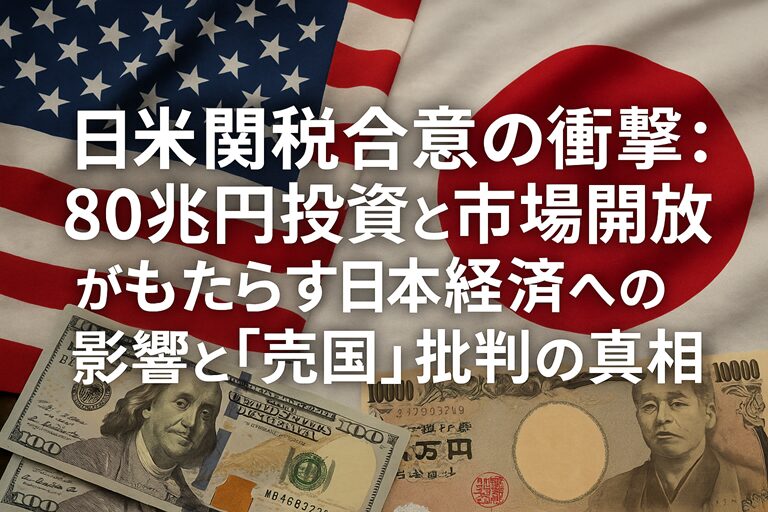
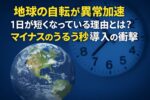

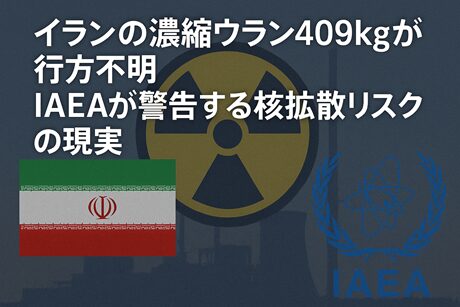
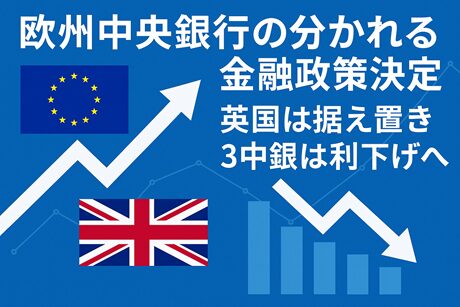
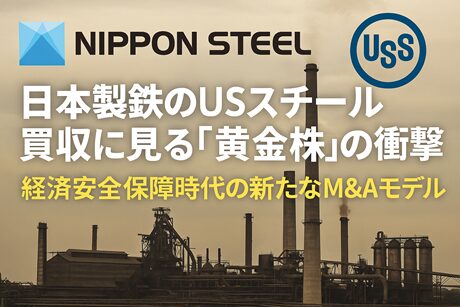
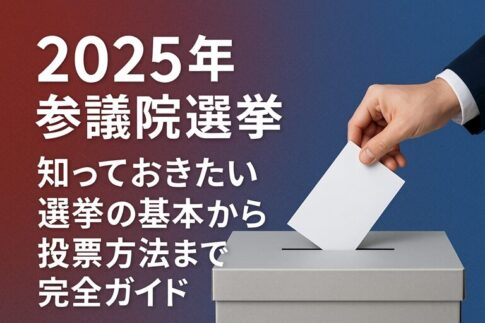
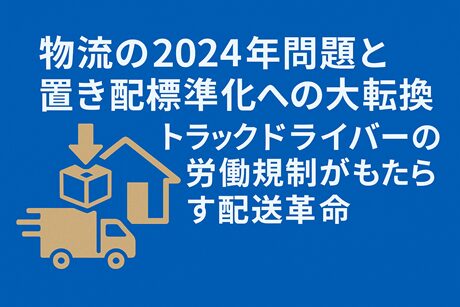


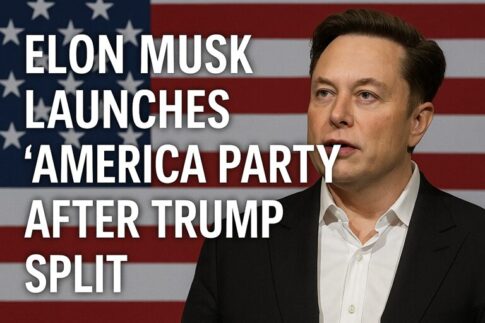

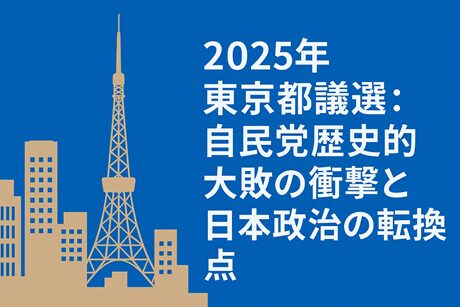



Leave a Reply